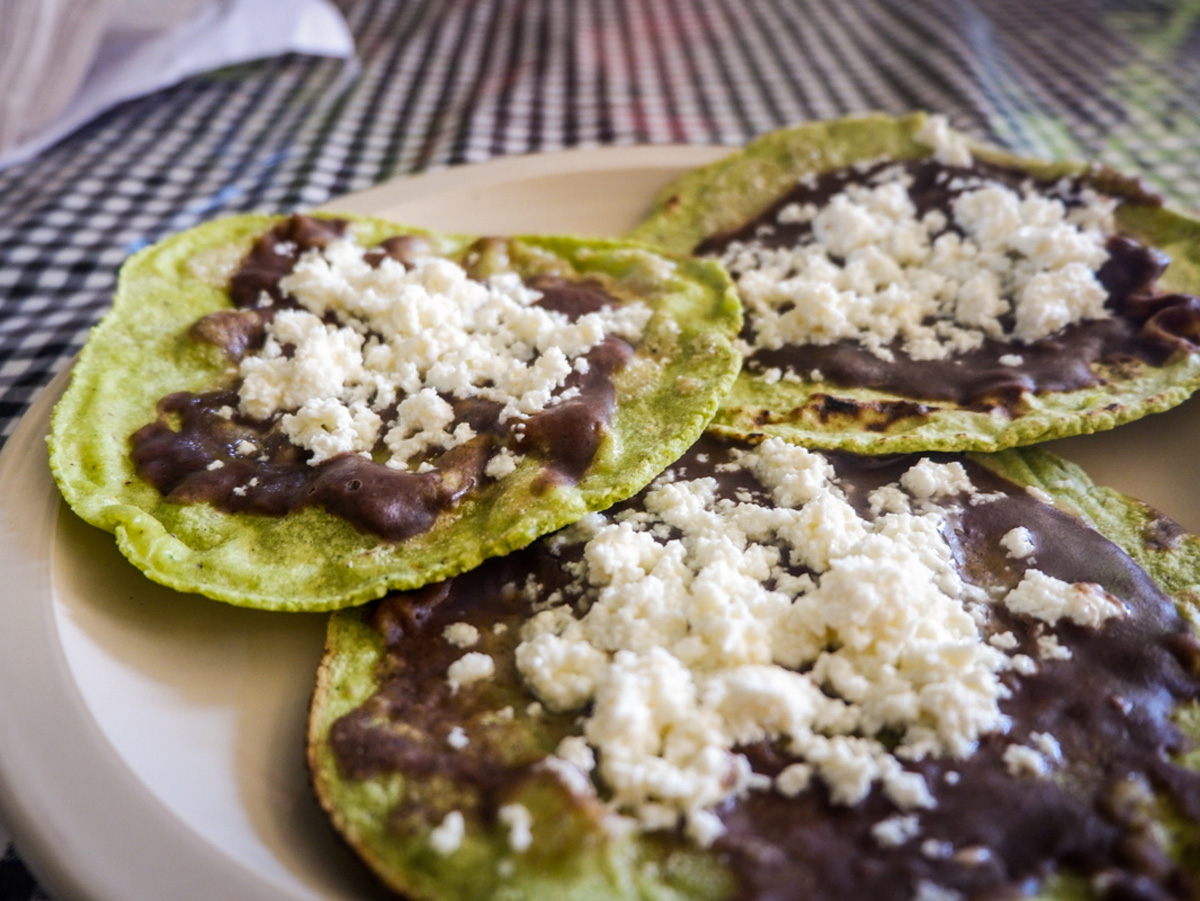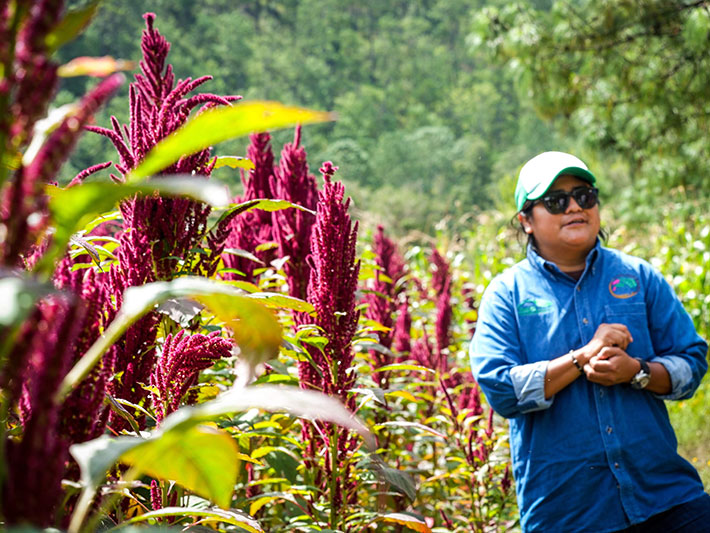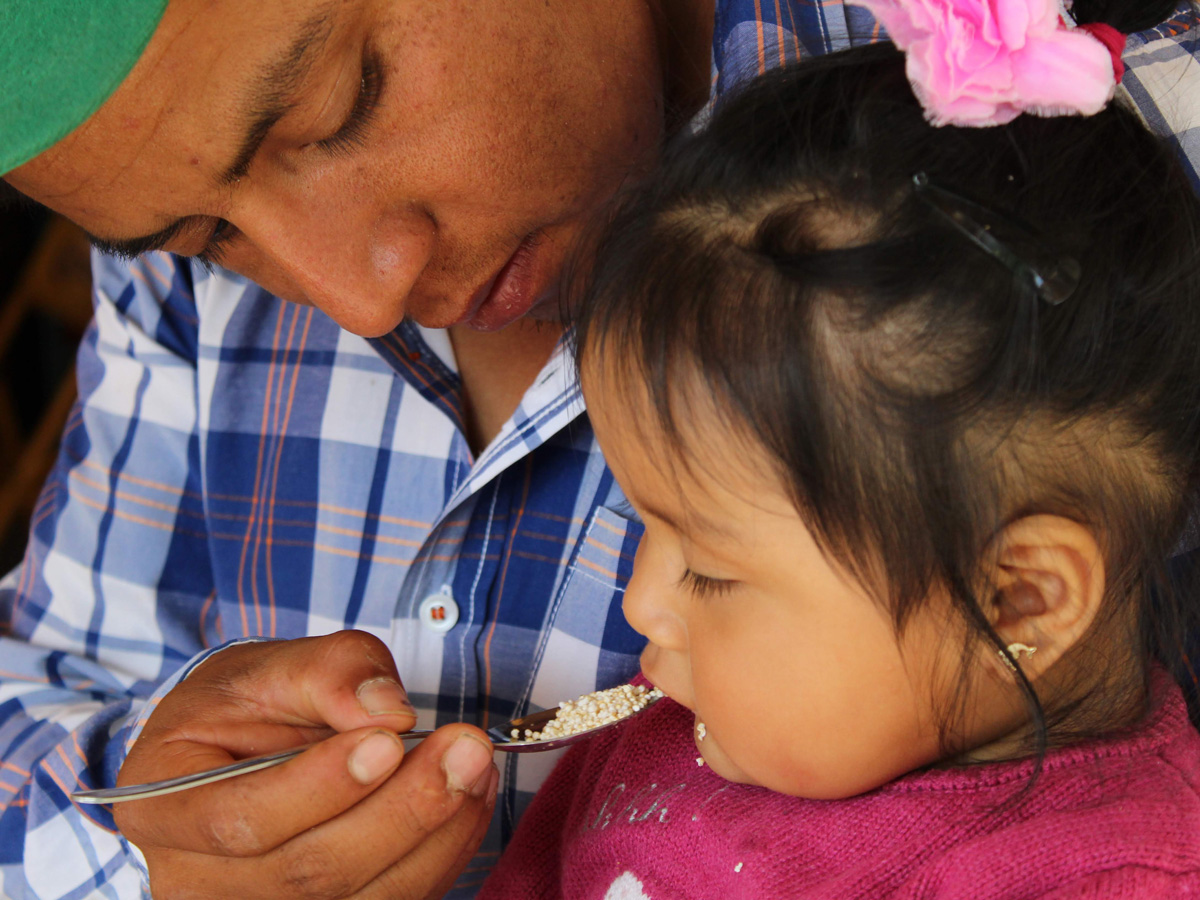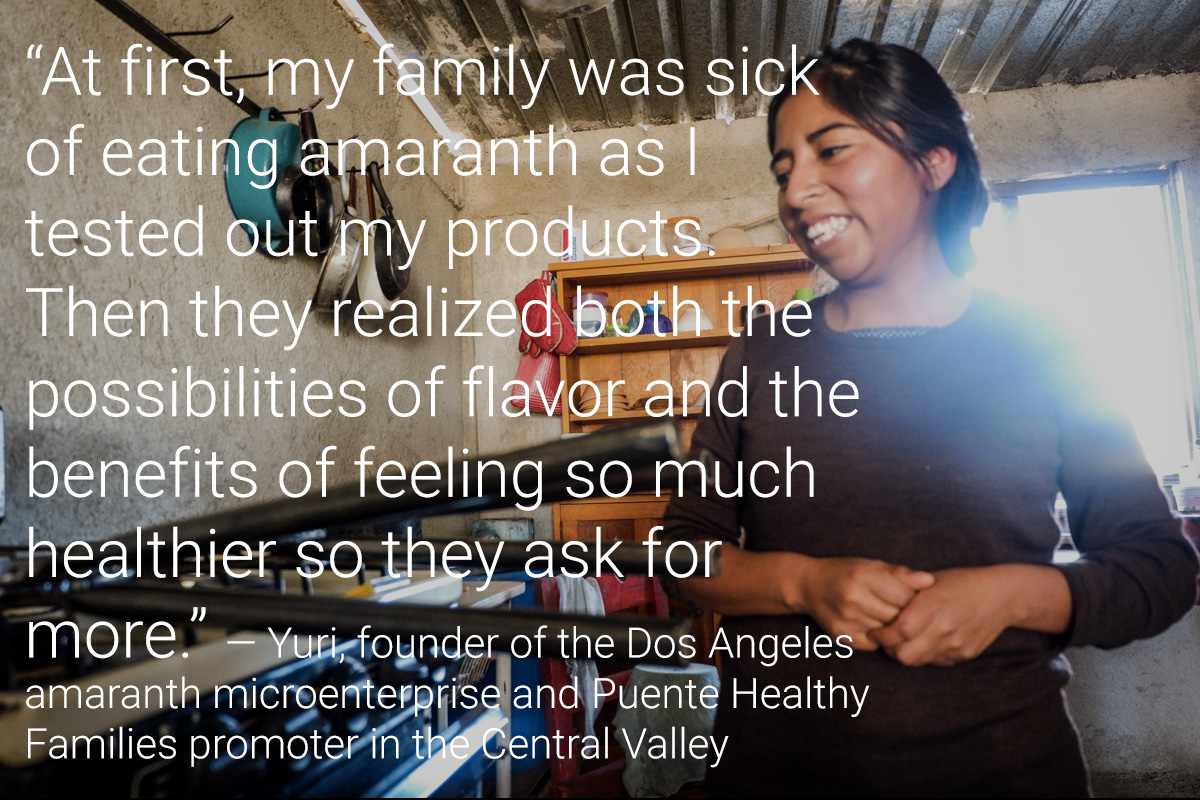As an ingrediente, amaranth is extraordinary for its diversity of uses. It is consumed in various forms: seed, flour, cereal and leaves. It can be easily incorporated into the daily diet of a Mexican family.
In Nahuatl, amaranth is “huatli” — “the smallest giver of life.”
This name is a perfect match as amaranth is a fast-growing annual plant that can grow up to 5 cm per day, whose seed and leaf has an abundance of nutritional properties, and whose tiny seed has a storage capacity of up to 20 years in good conditions.
For Mesoamerican pre-Columbian peoples, amaranth was as important as corn and beans, maíz y frijoles. It was part of the daily diet for the Mayans, Aztecs, and Incas. The Mexicas produced 15 to 20 thousand tons of amaranth grain a year, most often eaten as “atoll”,a paste mixed with corn, honey, and chiles, wrapped in amaranth leaves. However, amaranth disappeared from Mexican fields and family tables when the Spanish arrived and ruled between 1577 and 1890. Today, only 4,700 tons of amaranth is produced each year in Mexico.
Today, the leading cause of death in Oaxaca is heart disease, the second is diabetes, and the sixth is malnutrition. All of these diseases are strongly connected with diet which means we have the opportunity to reverse these statistics with each and every meal. Amaranth’s high nutritional value and its historical relationship with Oaxaca made it a powerful option for Puente’s mission.
Amaranth provides energy, like cereals; proteins, like legumes, and vitamins and minerals like vegetables. It is an important source of Vitamin A, B, C and D, Potassium, Calcium and Iron. It is considered a “pseudocereal” because it is similar to a cereal, but with a much higher protein value. It contains lysine, a rare amino acid in other cereals that helps growth, enzyme formation, antibodies, obtaining energy and protein synthesis. It can contain up to twice as much protein and seven times more fiber than rice, and provide 10 times more calcium than wheat.
The amaranth seed is an important source of phosphorous which supports calcium absorption. Its leaves are also a source of folate (what is synthetically known as folic acid), essential in the formation of red blood cells and genetic material, and therefore especially important in women who are or may become pregnant. The seed can be consumed as a popped cereal, boiled, boiled, roasted, in refreshing drinks, or ground into a flour. As it is both high in protein and gluten-free, it is a valuable ingredient for use in health-conscious, celiac, and/or plant-based diets.
Amaranth’s market value is such that farmers can earn considerably more growing amaranth than other grain crops; the net-profit of growing amaranth is more than three to five times the net profit of other grain commodity crops. Amaranth is a C-4 plant that is drought resistant, meaning it is an excellent option to diversify crops, especially given the unpredictable global weather patterns that have recently impacted farming and livelihoods in Oaxaca.






